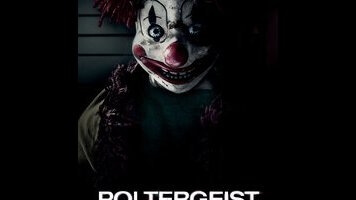The new Poltergeist can’t outrun its source material

The 2015 edition of Poltergeist would be a decent horror movie if it didn’t already exist. There’s the 1982 edition, for starters, a masterful collaboration between Steven Spielberg and Tobe Hooper that sends a suburban family through the haunted-house wringer. But the new Poltergeist also recalls James Wan’s Insidious and any number of other recent cinematic hauntings, with the usual little kids talking to unseen entities, electronics going haywire, creepy-looking toys, paranormal investigators acting slightly wacky, and cheap but effective jump scares.
That’s not to say that this remake represents pure, derivative hackwork. Director Gil Kenan, who effectively communed with a gentler form of ’80s ghosts for the Spielberg/Robert Zemeckis production Monster House, assembles graceful moving tableaux of the Bowen family, introducing dad Eric (Sam Rockwell), mom Amy (Rosemarie DeWitt), and kids Kendra (Saxon Sharbino), Griffin (Kyle Catlett), and Madison (Kennedi Clements) swiftly and effectively, often editing with camera movement rather than with cuts. When the Bowens move into their new home, middle child Griffin feels most attuned to its spookiness—the closet door that won’t open, the twisty old tree outside his window, the snaps of static electricity at the base of the stairs, and, crucially, little Madison chatting with invisible friends her parents assume are imaginary. Playwright David Lindsay-Abaire, handling the screenplay adaptation, gives Eric and Amy some warm, funny dialogue early on—or maybe it just seems that way because Rockwell and DeWitt are constitutionally incapable of giving uninteresting performances, even in stock horror-parent roles. (Rockwell is particularly convincing playing the kind of dad who calls his son “buddy” and “pal” all the time.)
Though Rockwell and DeWitt give the material their own likable spin, most of the story mechanics will be familiar to anyone who has seen the original Poltergeist. Kenan’s film does try its hand at some economic recontextualization; Eric has just been laid off, and the family itself is downsizing into a less desirable suburban neighborhood, a somewhat-ragged development that another character implies was a more popular destination in the ’90s. But the movie never travels much further down that road, and as it goes on, its tweaks to the original story get lighter, sometimes borderline wispy. There’s the brief and eerie novelty of seeing analog static invading the screens of digital gadgets; some rejiggered outside help in the form of Carrigan Burke (Jared Harris), a paranormal investigator from one of those cheesy cable shows; and the briefest of forays into de facto found footage involving a camera-mounted toy drone.
When the scares start, Kenan does stage them with some spook-house brio. The first big paranormal attack around the film’s midpoint cuts between three different ghostly threats (one for each kid), the camera whooshing around like a slower-paced Sam Raimi picture. But the same-but-different climax lacks the urgency of the original Poltergeist—which, in the end, the newer film can’t outrun. Taken on its own, this one does offer some respite to the recent spate of gloomy exorcism movies; though his film is more technically proficient than truly scary, Kenan has a clear sense of fun, harkening back, again, to ’80s Amblin movies. But the most retro thing about the remake is its specific, outdated utility: If anyone still patronizes video stores with hard copies, and if those stores don’t happen to have the original Poltergeist (or Insidious) in stock on a Friday night, this version might do the trick.